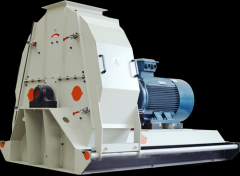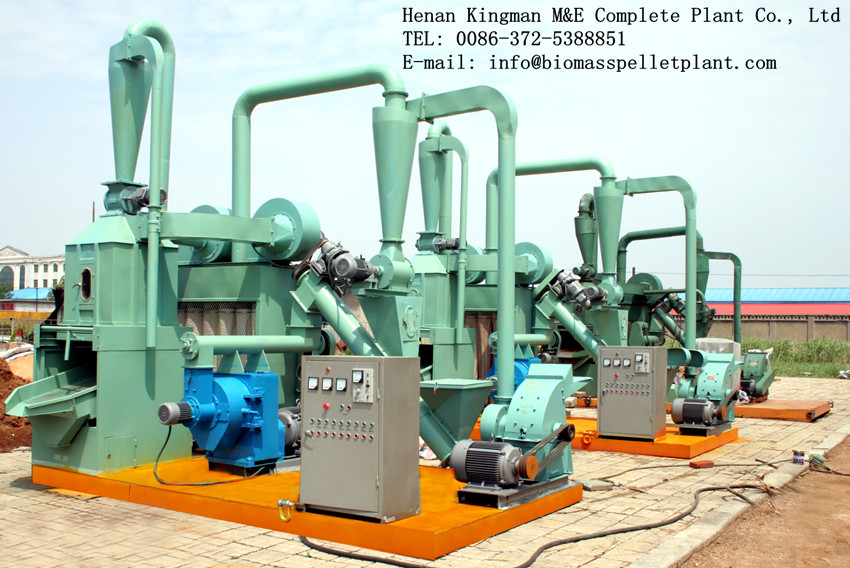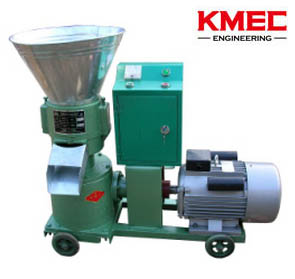The development of biomass formation technology I
In order to mitigate the global warming and shortage of traditional energy sources, the use of renewable energy sources is becoming increasingly necessary. Biomass is the most common form of renewable energy, which is widely used all over the world in recent years. Latterly, much attention has been focused on biomass formation technology in order to identify suitable biomass species, which can provide high-energy outputs to replace conventional fossil fuel energy sources. The type of biomass required is largely determined by the energy conversion process and the form in which the energy is required. The conversion of biomass into energy can be achieved in a number of ways, among which pelletizing technology(with pellet mill or pellet plant) and briquetting technology(with briquette machine) are the most common ones.
The densification technology of biomass solid fuel means the method and technology etc. of processing the biomass material into solid formation fuel, and it includes the technology and equipment of the whole biomass production line. Now, the product of biomass solid formation fuel is classified into two shapes, briquette and pellets. Due to the different specification of processing, there are big differences between varied densification technologies which can be classified into briquetting technology (straw briquette machine) and pelletizing technology (sawdust pellet mill, straw pellet mill and palm pellet mill etc). According to the consistence of production, it can be classified into continuous processing technology and single machine processing technology. It contains crushing material, drying, conveying, mixing, feeding, forming, cutting, cooling, weight and package etc. The technology which can produce continuously and stably is continuous production. The single machine is to depend on the manpower to feed the material, it is not continuous production.
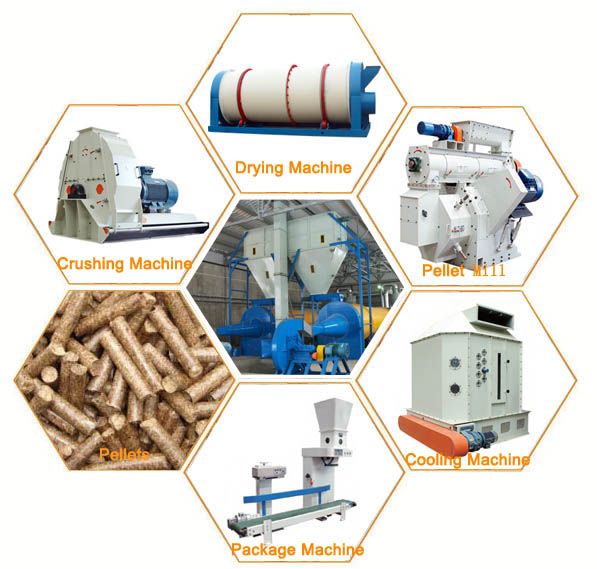
According to the degree of automation, it can be classified into automation processing and non automation processing. The process route and the proportion of labor force of main product or majority of products of each production line decided the necessary equipment to complete several types of product processing of one production line, as well as the arrangement of the equipment and the setting of workplace etc. The route of each processing technology has to adapt to the requirements of each product through adjusting the parameter, it achieve good economic efficiency when adopting the best processing technology.
This article mainly researched about the processing technology of biomass solid densification fuel, we make a general ideal about the current situation of biomass solid formation fuel, as well as research about current situation and issues of current processing technology of densification equipment of production line, to talk about the method of technology route and related equipment during the scale production and industrialized process.
1.The current situation of biomass industry at home and abroad
Due to decreasing of global traditional energy—oil, coal and natural gas and the pressure of greenhouse emission etc, the technology of biomass solid densification has been concerned by foreign developed countries universally. According to the EU’s biomass energy plan published by EU, the portion of biomass energy will be improved from14% to 20% from 2009 to 2020. In 2010, the applying of biomass energy in Finland, Sweden and Austria account for the one time energy consumption about 18%, 16% and 10% by turns. In 2010, there are about 94 biomass pellet mills in Sweden, and the total production ability is about 2.2Mt.
From 1980s, our country began to engage in the research of biomass densification technology, we have achieved a lot. In 2008, the National Academy of Design of agriculture department has established a 20kt solid densification fuel production line for demonstration in Da xing country, Beijing City, which includes 10kt biomass pellet fuel production line and 10kt briquette fuel production line every year. The main raw material for the production line is corn stalk, sawdust, as well as the wheat stalk, peanut shell and corn stalk etc.
In 2009, a pellet plant which takes agriculture and forestry as materials has been established in Hui Nan country, Zhen Zhou city, with about 15kt production capacity per year. The next year, biomass pellet plant has been built in Da Xing gou and Jiao He separately. After that, about ten biomass pellet plant demonstration spots has been established in the nation, like Yan Qing biomass briquette fuel demonstration spot in Beijing and Huai Nan biomass pellet fuel demonstration in An Hui province.
2. Biomass processing route
The technology of biomass solid densification fuel means the method and technology of processing the biomass material into solid densification fuel, it includes adjustment technology and equipment of adjusting the parameter of the whole production line. The biomass solid formation fuel has there kinds of shapes, they are briquette, pellet or stock. According to the shape of the finished products, it classified into three types of technology of briquette, pellet and stock. According to the continuity of production, it classified into continuous production technology and single machine production technology.
The continuous production technology can produce stably and continuously; it includes crushing raw material, drying, conveying, mixing, feeding, formation, cooling, weighting and package. The single machine belongs to the non continuous production. According to the degree of automation, it classified into automatic production technology and non automatic production technology. The technology parameter can be adjusted automatically in the production to adapt to meet the requirement of each product is called automatic production technology.
In the foreign country, biomass solid formation is mostly continuous automatic production technology, and the biomass material mostly comes from farm, agriculture processing plant or wood processing plant. The resources are centralized with simple material. There is no use to consider about the process of mixing material during the production.
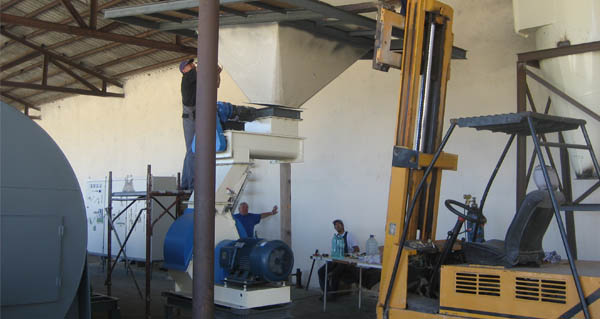
Read:How to build a pellet plant?
Our country is mostly single machine production, it only need crushing and formation, with man power feeding. It depends on the producer’s experience to estimate the feeding amount and moisture content of material with simple processing, low cost. But it needs heavy labor force with unstable product quality and low efficiency.
In the continuous production, our country has briquetting and pelletizing with different technology. At present, the domestic continuous production technology is mostly applied in the briquetting and pelletizing technology.
The route of briquetting technology usually means that the material pass through the ring die hole of cylinder shape or prismatic shape for forming, and the diameter of the die or the diagonal line of intersecting surface is bigger than 25mm. During this densification technology, the moisture content of the material is usually about 10-20%. The particle size of material is less than 50mm.
The material of processing route of pelletizing usually pass through the cylinder shape die hole, the diameter of the die is usually less than 25mm, and the thickness of the die which is actually the length of die hole is less than 4 times of the diameter. It usually has three types, 6mm, 8mm and 10mm. The moisture content of material is usually about 12-15%, the particle size is proper between 1-5mm.
There are big differences between processing route of briquette formation and pellet formation, it mainly demonstrated from the several points below:
1) The crushing method. According to the different requirement of particle size of densification, the way of crushing is varied. When the particle size is 50mm, it fit for the way of squeezing, rubbing and cutting. The briquetting formation require to crushing for one time to meet the particle size demand. In the pelletizing formation technology, it contains crude crushing and fine crushing of the second time. And the fine crushing are usually adopt the way of hitting of hammer mill.
2) The conveying method. The different particle size affect the capacity of flowing of feedstock, which has different way of feeding material and conveying, so changed with the equipment of feeding and conveying. Because the big particle size of pellet is easy to form bridging, it requires the compulsive feeding equipment. When the particle size is between 30-50mm, it should adopt the screw conveying, belt conveying and scraper conveying; for the particle size of less than 5mm, it should adopt pneumatic transmission.
3) Implanting of impurities. The finished product of densification technology is usually 6mm, 8mm and 10mm, three specifications, while the briquette densification production has diameter which are not less than 25mm. Different type of densification product has absorbed varied ability of implanting impurities. The pellet densification product has much more strict requirement towards the impurity content and particle size comparing with the briquetting product. Especially for the demand of removing the stones, it has to set different removing systems.
4) Way of cooling.
The material of pellet mill are easy to crush after compressing, the sudden cooling cause the burst of waist which need the cooling device to low the temperature. The briquette fuel is usually has big volume, small density, it can be cooled and fried naturally.
KMEC is a profession pellet mill manufacturer, which combines research, development, production, sales and services. Our company is engaged in the production of all kinds of pellet mill, pellet plant and complete set of production line. If you have any problem related to the pellet mill, please feel free to contact us. We are willing to offer suggestions and make a contribution to your pelletizing business.
The development of biomass formation technology II
-------------------------------------------------------------------------------------------------------------------------------------------------
News
- Small Pellet Machine Manufacturer-Kingman
- Application of Wood Pellets and Use of Biomass Pellets
- From Fossil Fuel into Biomass Pellet Fuel
- Biomass Pellet Making Machines Market
- Applying of pellet stoves for home use
- Highland pellets to build $130 million facility in arkansas
- How to deal with the blocked hammer mill
- How to Make Wood Pellets with Sawdust
- The government policy promotes the development of biomass fuel
- Market analysis of biomass pellet fuel
- Strategic positioning of renewable energy
- Biomass energy has pass through the pre assessment
- The key point of deep processing of biomass pellet
- Harbin is promoting the development of biomass machinery
- The development of biomass formation technology I
- The development of biomass formation technology II
- Biomass energy industry is now going full tilt in 2015
- Rapid increasing demand of sawdust pellet on the market
- Pellet fuel market in EU
- Chinese Biomass Energy Conference held in Beijing
- Future market development of straw pellet mill
- Peanut Shell Pellet Mill Makes High Quality Pellets
- The utilization of straw is only 5%, biomass energy needs our attention!
- Corn straw pellet machine relieves the tight supply of fuel energy
- Reasons for loose or not forming of biomass pellet mill


